(VOVWORLD) - Armenia is an underrated destination in the Caucasus. With a rich history that dates back to the ancient trade route, Armenia is a unique destination that needs to be on your bucket list. In today’s show, we’ll have Adrineh Der-Boghossian, an Armenian-Canadian freelance editor, share with us some quirky and fun facts about Armenia that you probably didn’t know.
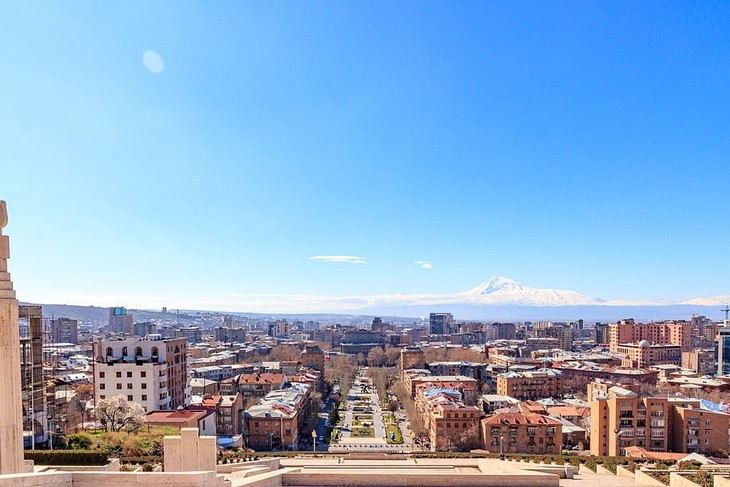 View of Armenia's capital city - Yerevan View of Armenia's capital city - Yerevan |
Ngoc Diep: Hi, Adrineh. Welcome to the show. We really can’t wait to hear about Armenia, a lovely little country in the Caucasus. What is the first thing we should know about Armernia?
Adrineh Der-Boghossian: Thank you for having me today. The very first fact about Armenia is that it is an ancient country. Armenia, along with Iran, China, Greece, Egypt and Japan, is among the 6 ancient countries that have survived for thousands of years. Armenia was first mentioned in Darius the Great’s Behistun Inscription in 520 BC. Armenia was also mentioned by ancient Greek historians Herodotus and Xenophon in the 5th century BC.
Ngoc Diep: I read on the internet that Armenia is also the first country to adopt Christianity. Tell us more about this, please.
Adrineh Der-Boghossian: That’s right. Armenia was the first country to have adopted Christianity as its state religion. Today, 97% of the population are Christians, and Armenia has some of the most beautiful churches in the world. St. Gregory the Illuminator converted the country to Christianity back in 301AD, and since then, many churches have been built in his name.
Ngoc Diep: And the first church in the world was built in Armenia, it it true?
Adrineh Der-Boghossian: That’s also true. Etchmiadzin Cathedral was the first state cathedral built in the world back in the early 4th century. This place is also the headquarters of all the churches in Armenia and one of the most visited pilgrimage sites in the world. Since 2000, the cathedral has been on the list of UNESCO World Heritage Sites.
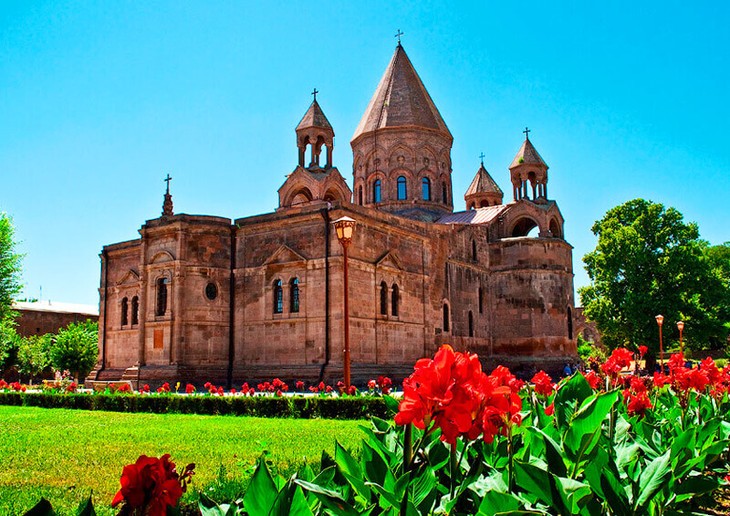 Etchmiadzin Cathedral (Photo: janarmenia.com) Etchmiadzin Cathedral (Photo: janarmenia.com) |
Ngoc Diep: What a little lovely country with so many amazing things that remain lesser known. Now, tell us more about the country’s capital city – Yerevan.
Adrineh Der-Boghossian: Well, Yerevan, the 14th capital city of Armenia, is one of the oldest cities in the world. It is located in the northeastern part of the Ararat Valley. It was founded in 782 BC by King Argishti I. Yerevan is 29 years older than Rome. This year, Yerevan celebrates its 2802nd anniversary. Yerevan is also known as “The Pink City.” Its buildings were all made of naturally coloured volcanic rocks of varying shades of pink, hence giving it the name “pink city.”
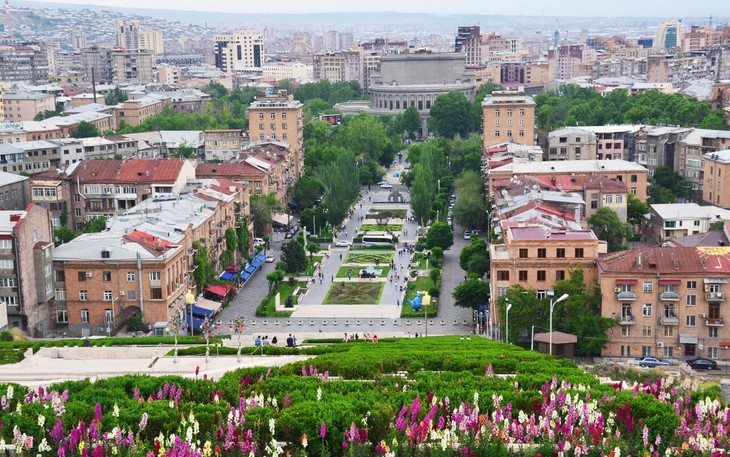 Yerevan - The Pink City Yerevan - The Pink City |
Ngoc Diep: Are there any interesting facts about Armenia that not many people know about?
Adrineh Der-Boghossian: We’re proud that Armenia is a chess superpower. Chess has been known in Armenia since the 9th century. In modern Armenia, since 2011, starting in first grade, students have been learning chess as a compulsory subject in school. Tigran Petrosian Chess House in Yerevan is where many huge international chess tournaments have been held. Currently, the Armenian men’s team is one of the strongest in the world, and leading Armenian chess player Levon Aronian is consistently among the top three players in the world on the International Chess Federation (FIDE) rating list.
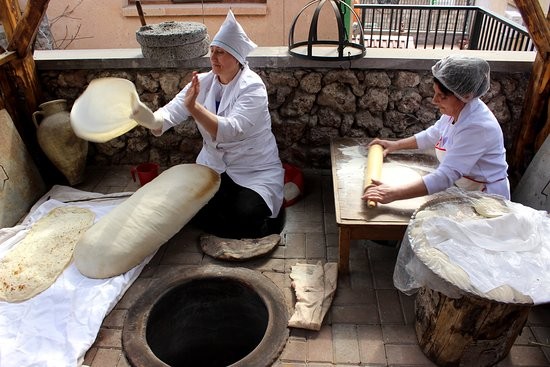 Armenia’s bread (lavash) is baked underground in a tonir. (Photo: tatev.com) Armenia’s bread (lavash) is baked underground in a tonir. (Photo: tatev.com) |
Ngoc Diep: I know that Armenia’s bread (lavash) is famous worldwide and is also on the UNESCO World Heritage list. Tell us more about this, please.
Adrineh Der-Boghossian: In 2014, Armenian bread (lavash) was included on the UNESCO list of Intangible Cultural Heritage of Humanity. Armenians bake their lavash underground in a tonir, which is an underground earth oven. Armenians love to eat this thin layer of flat chewy bread that’s made from flour, salt and water and baked in a tonir. Lavash can be kept for 1 year without turning bad. So usually local women will bake the lavash in bulk and then store them to eat slowly for the next few months. Armenians cannot imagine having their meals without bread! Even if they’re eating rice, they’ll need to have bread with it too!
Ngoc Diep: That’s very interesting and delicious. So, anyone visiting Armenia should not miss to taste bread or lavash baked in a tonir. Armenia is also one of the oldest wine-producing countries in the world, am I right?
Adrineh Der-Boghossian: Yes, you are. Armenia is one of the oldest countries producing wine in the world. Wine cultivation is attributed to its blessed location of being on the fertile valleys of Mount Ararat, where high-quality grapes can be grown. The world’s oldest winery was found in the village of Areni, located on the bank of the River Arpa. It is said the winery produced wine over 6,000 years ago.
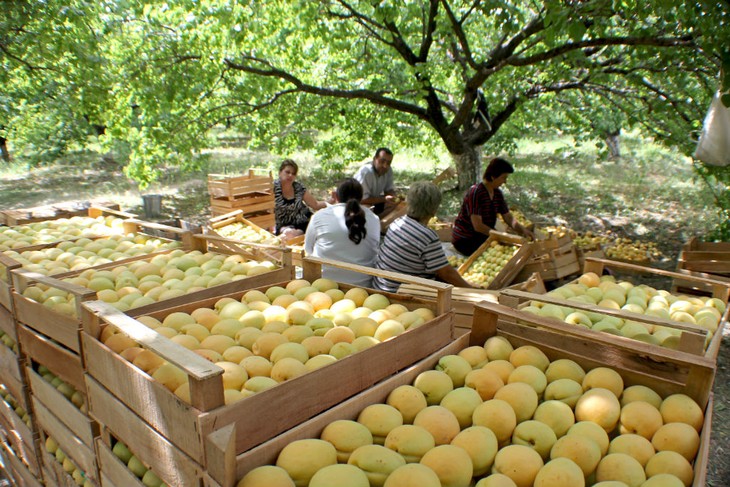 The apricot season in Armenia. (Photo: the armenite.com) The apricot season in Armenia. (Photo: the armenite.com) |
Ngoc Diep: Now, a final question. We know that the apricot is very important in Armenia. Why is that?
Adrineh Der-Boghossian: The orange colour of Armenia’s flag actually symbolizes the apricot! That’s how significant apricots are to Armenia! And when you walk through the markets, you’ll find vendors selling apricots of all sorts — from dried apricot to fresh apricot, apricot-flavoured wine, apricot juice, and anything else you can think of!
Ngoc Diep: Thank you so much, Adrineh, for joining us today and sharing with us interesting stories about Armenia, a lovely little country in the Caucasus.